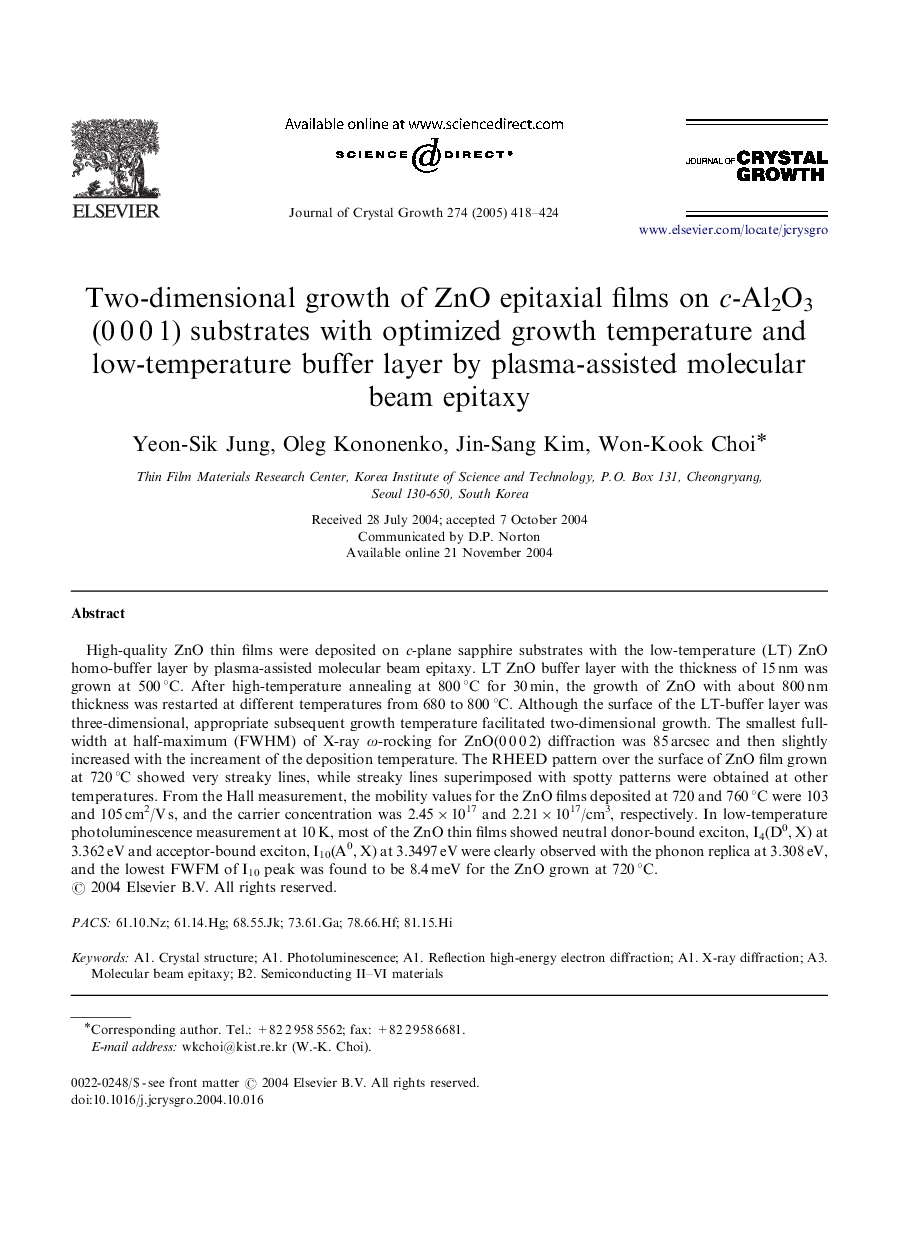| Article ID | Journal | Published Year | Pages | File Type |
|---|---|---|---|---|
| 9830228 | Journal of Crystal Growth | 2005 | 7 Pages |
Abstract
High-quality ZnO thin films were deposited on c-plane sapphire substrates with the low-temperature (LT) ZnO homo-buffer layer by plasma-assisted molecular beam epitaxy. LT ZnO buffer layer with the thickness of 15 nm was grown at 500 °C. After high-temperature annealing at 800 °C for 30 min, the growth of ZnO with about 800 nm thickness was restarted at different temperatures from 680 to 800 °C. Although the surface of the LT-buffer layer was three-dimensional, appropriate subsequent growth temperature facilitated two-dimensional growth. The smallest full-width at half-maximum (FWHM) of X-ray
Ï-rocking for ZnO(0 0 0 2) diffraction was 85 arcsec and then slightly increased with the increament of the deposition temperature. The RHEED pattern over the surface of ZnO film grown at 720 °C showed very streaky lines, while streaky lines superimposed with spotty patterns were obtained at other temperatures. From the Hall measurement, the mobility values for the ZnO films deposited at 720 and 760 °C were 103 and 105 cm2/V s, and the carrier concentration was 2.45Ã1017 and 2.21Ã1017/cm3, respectively. In low-temperature photoluminescence measurement at 10 K, most of the ZnO thin films showed neutral donor-bound exciton, I4(D0, X) at 3.362 eV and acceptor-bound exciton, I10(A0, X) at 3.3497 eV were clearly observed with the phonon replica at 3.308 eV, and the lowest FWFM of I10 peak was found to be 8.4 meV for the ZnO grown at 720 °C.
Keywords
Related Topics
Physical Sciences and Engineering
Physics and Astronomy
Condensed Matter Physics
Authors
Yeon-Sik Jung, Oleg Kononenko, Jin-Sang Kim, Won-Kook Choi,
